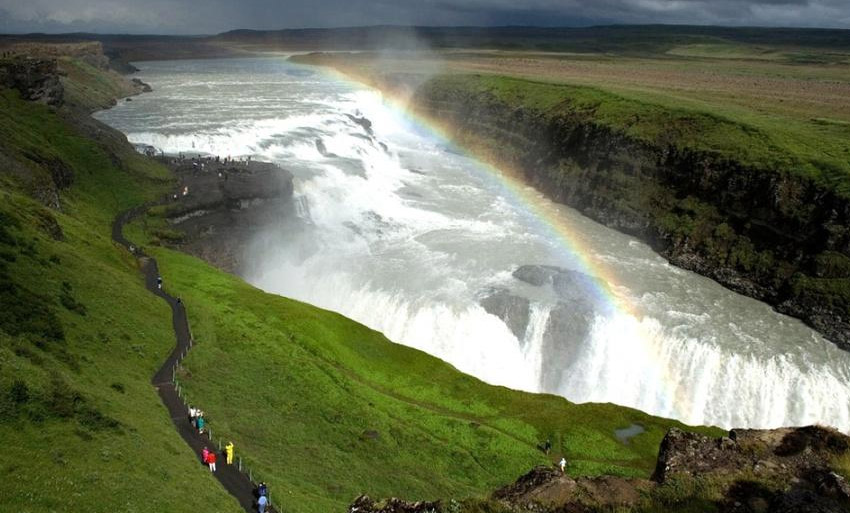Germany – almost parallel universe
 Many of us have heard more than once about a special way of life in Germany, different from ours. And about the zealousness and pedantry of the Germans and all the jokes go. In fact, these are not such jokes, and what seems strange to us is quite common in Germany. These 10 facts will prove that Germany in some moments is practically a parallel universe.
Many of us have heard more than once about a special way of life in Germany, different from ours. And about the zealousness and pedantry of the Germans and all the jokes go. In fact, these are not such jokes, and what seems strange to us is quite common in Germany. These 10 facts will prove that Germany in some moments is practically a parallel universe.
1. What’s in my name?
Most Germans despise “sticky” greetings and stick to handshakes. With regard to appeals, in Germany there is a certain regulation, which differs from the usual to us. If in Russia you can shout to your neighbor “Hello, Ivanovich” or say hello to your elder colleague “Hello, Alla!”, Then in Germany this will not work.
To deal with the etiquette of the appeals, carefully listen to the interlocutor. If a new acquaintance calls himself simply by name, then he agrees to a friendly format of communication, which implies an appeal to “you”. But to the person who introduced himself Frau Muller or Herr Muller will have to be treated with respect.
2. Family values
Family for the Germans is always in the first place. After giving birth, women go on maternity leave, a year or a little longer, and then they give the child to the garden and go to work. Gardens in Germany work on a shortened schedule: they open at 7:00 and close until 5:00. It is also noteworthy that in preschool institutions in Germany there is no such thing as an afternoon nap. If the child wants to sleep, he can lie down in the corner of the room where mattresses and blankets are spread. As for women, they go on part-time work after maternity leave, spending at work from 20 to 35 hours a week.
3. No – early development
In the CIS countries, various methods of early development are very popular now. It is not surprising that since the age of two, a child has been actively taught letters and numbers with the help of special cards, blocks and so on. But in Germany it is generally not accepted. According to Novate.ru, up to 6 years old children are in an atmosphere of games and fun. They are taught to count and write at school, and until then no classes.
4. Bicycle culture
There are many cyclists in Germany and they are all full-fledged road users. In order to avoid unrest on the roads, the training of cyclists in Germany is taken very seriously. From primary school, children learn the rules of the road, and then move on to practical exercises. To do this, there are bicycle lanes with various road signs in the schoolyards. Training takes place in groups under the guidance of a teacher who simulates various driving situations. At the end of the course, a policeman comes to school, takes an exam and issues a certificate. Certified students under the age of 10 can only ride on sidewalks. All cycling participants are recommended to wear a helmet, and for talking on the phone it is a fine.
5. Beer
Fun fact, beer is included in the food basket. This drink is sold in office canteens, there are non-alcoholic options for nursing mothers, and the rules of the road allow you to drive a vehicle after a half-liter glass of foam.
Germany is famous for its beer products. According to Novate.ru, each region has its own exceptional recipe. The south is famous for wheat beer, a strong and aromatic drink is brewed in Cologne, a tart beer with a strong smell is popular in the north, and a smoky beer in Bamberg. According to records, in 2018 in Germany there were 1,500 breweries.
6. Politeness
For native Germans, politeness is not just a formality. Do not be surprised if someone from the new German friends will add the phrase “Best regards, Ursula” or “Regards, John” to each message. To unfamiliar people in this country, it is customary to show maximum respect. Over time, when you get to know each other, many formalities will disappear.
7. National outfits
Germans love their national costumes very much. Do not be surprised if, being in Bavaria, you will see girls in sundresses with aprons and men in trousers with suspenders. To many tourists, this moment seems to be something fake and fabulous, but indigenous people often wear national costumes for work, for a walk, and of course for a holiday.




